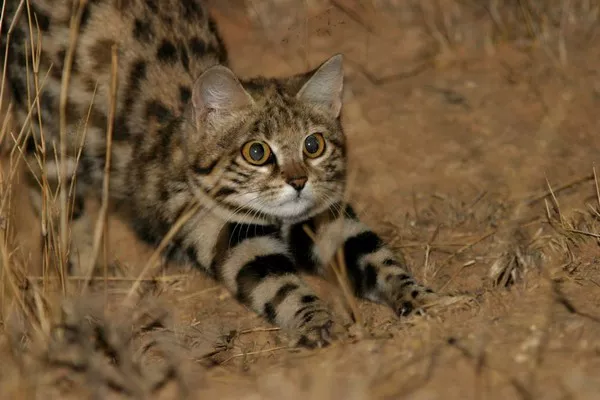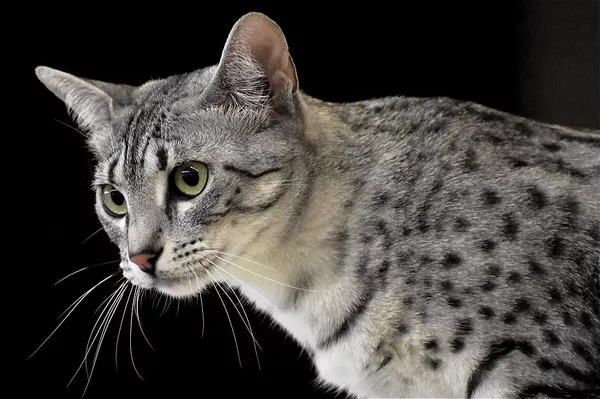For many cat lovers, the joy of owning a furry feline companion is unparalleled. However, for those who suffer from allergies, the prospect of sharing their home with a cat can be daunting. Fortunately, there are cat breeds that are considered hypoallergenic, meaning they produce fewer allergens and are less likely to trigger allergic reactions in sensitive individuals. But what exactly makes a cat hypoallergenic, and which breeds are the most suitable for allergy sufferers? Delving into the world of feline genetics and allergen production, we uncover the mysteries of hypoallergenic cats and explore the top breeds for allergy-prone individuals.
Understanding Feline Allergies: The Science Behind the Sneezes
Before delving into the specifics of hypoallergenic cat breeds, it’s essential to understand the root cause of feline allergies and how they manifest in sensitive individuals.
The Role of Fel d 1: The Allergen Culprit
The primary culprit behind feline allergies is a protein called Fel d 1, which is produced in the sebaceous glands and saliva of cats. When cats groom themselves, they spread Fel d 1 onto their fur, where it can linger and become airborne. In sensitive individuals, exposure to Fel d 1 can trigger allergic reactions ranging from sneezing and itching to more severe symptoms such as asthma attacks.
Allergy Triggers: Dander, Saliva, and Urine
In addition to Fel d 1, other allergens found in cats’ dander, saliva, and urine can also contribute to allergic reactions in susceptible individuals. These allergens can become airborne and settle on surfaces throughout the home, posing a constant challenge for allergy sufferers.
Genetics and Allergenicity: Breed Variations
While all cats produce Fel d 1 to some extent, certain breeds are known to produce lower levels of the protein or have coat types that are less likely to retain allergens. Understanding the genetic factors that influence allergenicity can help identify breeds that are more suitable for allergy-prone individuals.
Deciphering Hypoallergenic Cats: Traits and Characteristics
When it comes to hypoallergenic cats, not all breeds are created equal. Some breeds are known for producing fewer allergens or having coat types that are less likely to trigger allergic reactions. Let’s explore the traits and characteristics that define hypoallergenic cat breeds.
Low Shedding Coats: Less Allergen Retention
One of the defining characteristics of hypoallergenic cat breeds is their low shedding coats, which are less likely to trap and retain allergens such as Fel d 1. Breeds with shorter, single-layered coats or coats that lack an undercoat are generally considered to be more hypoallergenic than breeds with longer, thicker coats.
Less Saliva Production: Reduced Allergen Spread
Some hypoallergenic cat breeds produce less saliva or have lower levels of Fel d 1 in their saliva, reducing the spread of allergens onto their fur and surrounding environment. Breeds with this trait are often favored by allergy sufferers for their reduced allergenicity.
Minimal Dander Production: Limited Allergen Exposure
Dander, the tiny flecks of skin shed by cats, can also trigger allergic reactions in sensitive individuals. Hypoallergenic cat breeds tend to produce less dander or have coats that trap dander more effectively, minimizing allergen exposure and reducing the risk of allergic reactions.
Top Hypoallergenic Cat Breeds: A Guide for Allergy Sufferers
Now that we’ve explored the characteristics of hypoallergenic cat breeds, let’s delve into some of the top breeds that are known for their reduced allergenicity and suitability for allergy-prone individuals.
1. Siberian
The Siberian cat is renowned for its lush, semi-longhaired coat and gentle demeanor. Despite its luxurious fur, the Siberian produces lower levels of Fel d 1 compared to other breeds, making it a popular choice for allergy sufferers.
2. Balinese
The Balinese cat, a longhaired breed closely related to the Siamese, is known for its elegant appearance and affectionate nature. Despite its silky coat, the Balinese produces minimal dander and is considered hypoallergenic by many allergy sufferers.
3. Russian Blue
The Russian Blue cat is prized for its striking blue-gray coat and bright green eyes. With its short, dense fur and minimal shedding, the Russian Blue is less likely to trigger allergic reactions in sensitive individuals.
4. Bengal
The Bengal cat, known for its distinctive spotted coat and playful personality, is a favorite among cat enthusiasts. Despite its exotic appearance, the Bengal produces lower levels of Fel d 1 and is considered hypoallergenic by many allergy sufferers.
5. Devon Rex
The Devon Rex cat, with its unique curly coat and mischievous demeanor, is a standout among hypoallergenic breeds. With minimal shedding and reduced saliva production, the Devon Rex is a popular choice for allergy-prone individuals seeking a feline companion.
Caring for Hypoallergenic Cats: Tips for Allergy Sufferers
While hypoallergenic cat breeds may produce fewer allergens, proper care and maintenance are still essential for managing allergies effectively. Here are some tips for allergy sufferers considering bringing a hypoallergenic cat into their home:
Regular Grooming: Minimize Allergen Buildup
Regular grooming is essential for hypoallergenic cats to minimize allergen buildup on their coats and skin. Brushing your cat regularly and bathing them occasionally can help reduce dander and saliva residue, making them less likely to trigger allergic reactions.
Allergen Control Measures: Reduce Exposure
Implementing allergen control measures throughout your home can help reduce exposure to allergens and alleviate symptoms in allergy sufferers. This may include using air purifiers, vacuuming frequently, and washing bedding and curtains regularly to remove allergens from the environment.
Consultation with an Allergist: Personalized Advice
Before bringing a hypoallergenic cat into your home, it’s essential to consult with an allergist to assess your sensitivity to feline allergens and discuss potential strategies for managing your allergies. Your allergist can provide personalized advice and recommendations based on your individual needs and circumstances.
Conclusion
For allergy sufferers who long to share their home with a furry feline friend, hypoallergenic cat breeds offer a promising solution. With their reduced allergenicity and unique characteristics, these breeds provide a viable option for individuals seeking a cat companion without the risk of triggering allergic reactions. By understanding the traits and characteristics that define hypoallergenic cat breeds and implementing proper care and maintenance practices, allergy sufferers can enjoy the companionship of a beloved pet while minimizing the impact of feline allergies on their daily lives.

























